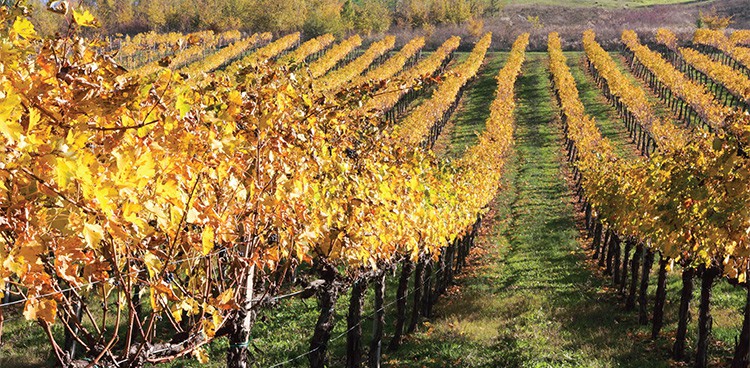
Think of a dry, plummy red wine, bright with spice, herbs, and refreshing acidity. Now add bubbles, and you’ve got one of the most palate-whetting reds in the world: Lambrusco.
Once regarded as little more than a wine cooler in the United States, this Italian sparkler is gaining buzz—especially now that we’re getting the good stuff. Back in the 1970s the market was flooded with Riunite, a heavily commercialized, saccharine Lambrusco closer in taste to alcoholic grape soda than wine. While the sweet style still has its acolytes, it’s now easy to find the fresh, dry types more traditional to Italy, the wine’s homeland.
Labeled secco (Italian for “dry”), these versions come from designated areas around Bologna, Parma, and Modena in Emilia-Romagna, and around Mantua in Lombardy, where the grape—called lambrusco, just like the wine—thrives. With soft, juicy, purple-berry flavors, high acidity, and floral—especially violet—scents, the variety works well in a sparkling wine, the fine bubbles keeping things vivace (“lively”), as the Italians say.
Secco Lambrusco styles range from rosé versions labeled rosato to deep reds with a bit of tannin. Some of this has to do with winemaker style, but there are also differences depending on where the wines are grown: There are four IGPs (Indicazione Geografica Protetta) and eight DOPs (Denominazione di Origine Protetta), each outlining specific areas that produce wines of a certain definable style. Lambrusco Grasparossa di Castelvetro, for instance, is said to be the deepest purple and most tannic of all, while Lambrusco di Sorbara, lighter in color and body with a floral fragrance, is one of the most delicate.
One element they all have in common is the gentleness of their bubbles: Lambrusco is by definition frizzante (“fizzy”), not spumante (“sparkling”), as it’s bottled under lower pressure than Champagne-style wines. Those bubbles typically come from a second fermentation in a pressurized tank rather than in the bottle, a practice common for lower-priced sparklers and for those meant to be drunk young and fresh. Lambrusco, happily, excels in both aspects: You’d be hard-pressed to find a bottle over $25 or a red as refreshing. All the better to complement the rich foods (Parmigiano Reggiano, prosciutto di Parma) it grew up with.
Its affection for decadent fare makes the wine a great match with cheese—parmesan or otherwise. Brent Kroll, Lambrusco lover and wine director of Neighborhood Restaurant Group in Washington, D.C., suggests other firm cow’s milk wheels and wedges, especially Ram Hall Berkswell from England. “The cheese has brine, yeast, and subtle strawberry notes that align well with wines from Sorbara,” he explains. He also finds Lambrusco can handle the tang of sheep’s and goat’s milk cheeses—in particular, he likes the way earthy cheeses such as Catalonian Garrotxa play against the wine’s fruity flavors.
Yet with Lambrusco there’s little reason to fuss: Just about every reputable bottling will offer the combination of fruit, acid, and bubbles that makes it one of the most jovial, easygoing wines around. ( Just take it to a Chinese restaurant, and you’ll see—Lambrusco is one of the few wines that can handle Szechuan peppercorns, fermented black beans, and any number of other salty, funky flavors.) But you really can’t beat the regional match of Lambrusco and Parmigiano Reggiano. Pop open a bottle and let the party begin.
Five to Try
- Medici Ermete Lambrusco Reggiano Assolo
- Villa di Corlo Lambrusco di Sorbara Primevo
- Cleto Chiarli Lambrusco di Sorbara Lambrusco del Fondatore
- Fiorini Lambrusco Grasparossa di Castelvetro Terre al Sole
- Pederzana Lambrusco Grasparossa di Castelvetro Gibe
Feature Photo Credit: francesca de marco | Shutterstock




